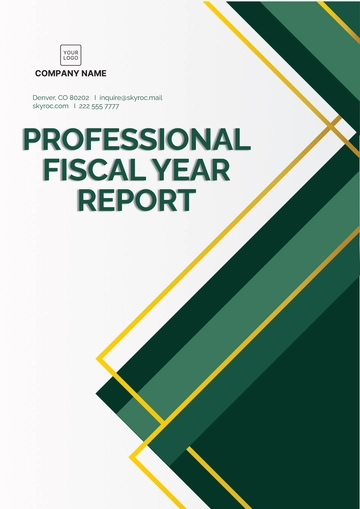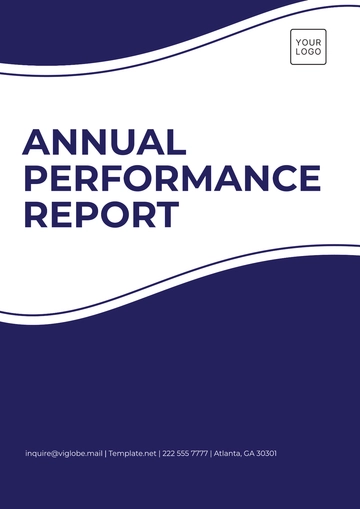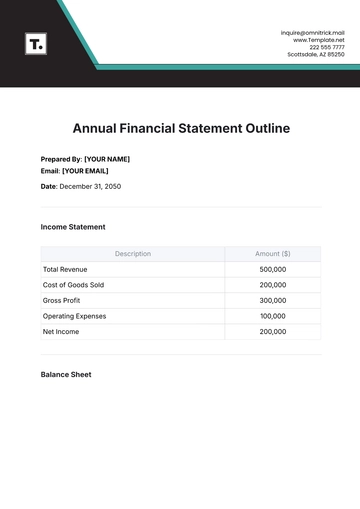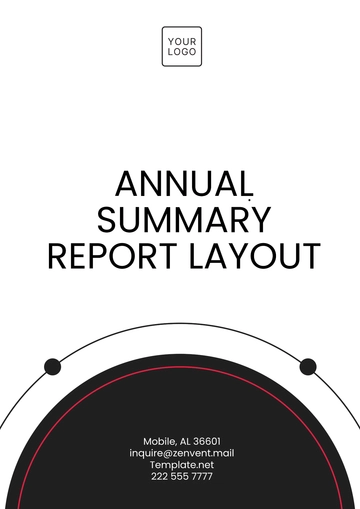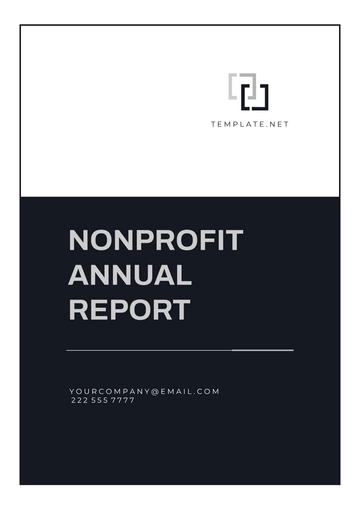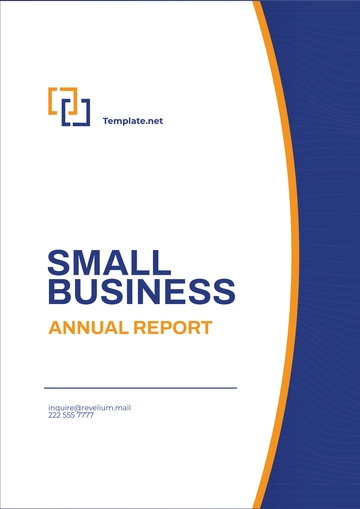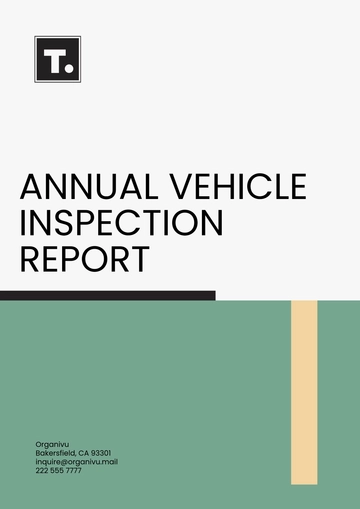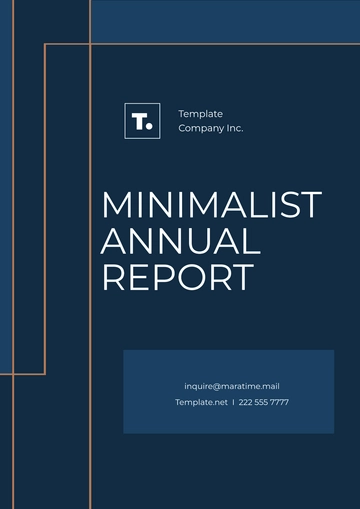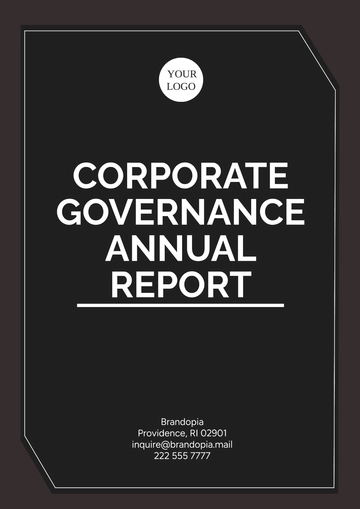Free Agriculture Sustainability Report
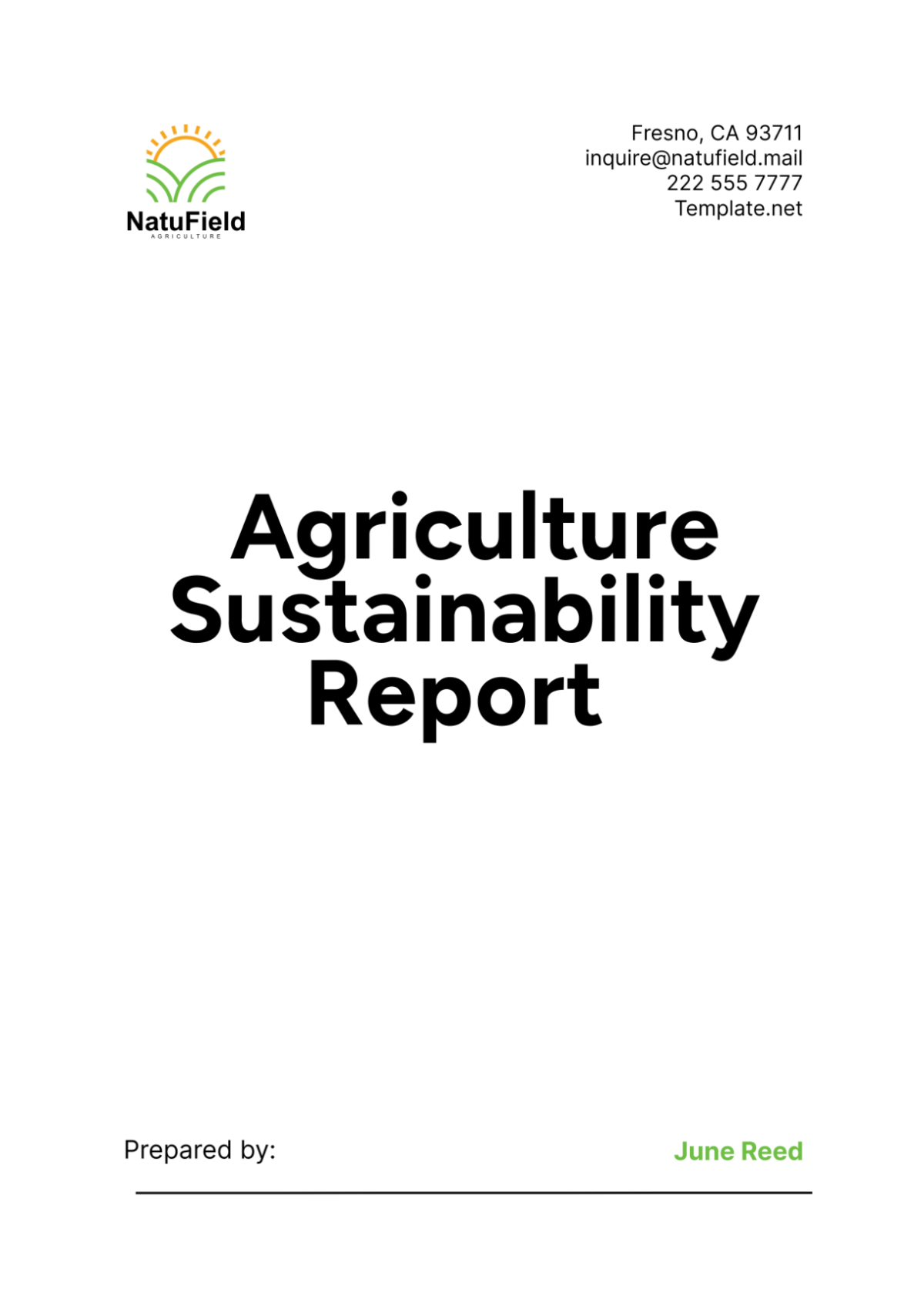
I. Executive Summary
A. Overview of the Report
[Your Company Name] Agriculture Sustainability Report delves into the current practices within the agricultural sector and their impact on the environment, economy, and society. This comprehensive analysis aims to provide an in-depth understanding of how sustainable practices can be integrated into agriculture to promote long-term ecological balance, economic viability, and social well-being.
B. Key Findings
The report identifies several critical areas where sustainable agricultural practices can make significant contributions. These include improvements in soil health, efficient water management, biodiversity conservation, and reduction of greenhouse gas emissions. Additionally, the economic analysis indicates that sustainable practices can be economically viable and socially beneficial, contributing to community resilience and market access.
C. Recommendations
To achieve sustainable agriculture, [Your Company Name] adopts a holistic approach that includes organic farming, crop rotation, conservation tillage, and integrated pest management. Policymakers and stakeholders are urged to support these practices through incentives, research funding, and regulatory frameworks. Furthermore, the integration of technological innovations and community engagement is essential for the successful implementation of sustainable agriculture.
II. Introduction
A. Purpose of the Report
The purpose of this report is to evaluate the current state of agricultural practices within our company, assess the sustainability, and provide actionable recommendations. This document serves as a roadmap for transitioning to more sustainable agricultural practices that align with environmental, economic, and social goals.
B. Scope and Methodology
The scope of this report encompasses a broad range of agricultural activities, including crop production, livestock management, and resource utilization. The methodology involves a comprehensive review of existing literature, field studies, and case analyses to identify best practices and potential areas for improvement. Data was collected from various sources, including government reports, academic research, and industry publications.
C. Importance of Agricultural Sustainability
Agricultural sustainability is crucial for ensuring food security, protecting natural resources, and promoting social equity. Sustainable practices help maintain soil fertility, conserve water, and reduce dependency on chemical inputs, thereby safeguarding the environment. Economically, sustainable agriculture can enhance productivity, reduce costs, and open new market opportunities. Socially, it supports rural communities, improves livelihoods, and fosters resilience against climate change.
III. Current State of Agriculture
A. Overview of the Agricultural Sector
Agriculture is a vital sector for [Your Company Name], providing employment, food, and raw materials. However, traditional farming practices have often led to resource depletion, environmental degradation, and socio-economic challenges. The current agricultural landscape is characterized by intensive farming methods, high input use, and a focus on maximizing yields.
B. Key Agricultural Practices
The predominant agricultural practices include monocropping, extensive use of synthetic fertilizers and pesticides and heavy reliance on irrigation. While these methods have contributed to increased production, they have also resulted in soil erosion, water scarcity, and loss of biodiversity. The following table illustrates the key agricultural practices and their associated impacts:
Practice | Description | Environmental Impact |
|---|---|---|
Monocropping | Growing a single crop species over a large area | Soil depletion, increased pest incidence |
Synthetic Fertilizers | Use of chemical fertilizers to enhance soil fertility | Water pollution, soil acidification |
Pesticides | Application of chemicals to control pests | Biodiversity loss, health hazards |
Irrigation | Artificial application of water to crops | Water scarcity, salinization of soils |
C. Challenges Facing the Agricultural Industry
The agricultural industry faces several challenges that hinder sustainability. These include:
Soil Degradation: Intensive farming practices have led to soil erosion, nutrient depletion, and loss of organic matter.
Water Scarcity: Over-extraction of water for irrigation has resulted in declining water tables and reduced availability of freshwater resources.
Climate Change: Agriculture is both a contributor to and a victim of climate change, with changing weather patterns affecting crop yields and increasing the frequency of extreme events.
Biodiversity Loss: The use of pesticides and monocropping practices has led to a decline in biodiversity, affecting ecosystem services and resilience.
Economic Pressures: Farmers often face economic pressures to maximize short-term yields, which can discourage the adoption of sustainable practices.
IV. Environmental Impact of Agriculture
A. Soil Health and Management
Soil health is fundamental to sustainable agriculture. Healthy soils are rich in organic matter, have good structure, and support diverse microbial communities. However, conventional agricultural practices have often led to soil degradation. To mitigate this, [Your Company Name] practices crop rotation, cover cropping, and the use of organic fertilizers. These practices enhance soil structure, increase organic matter content, and promote microbial activity.
B. Water Usage and Management
Water is a critical resource for agriculture, but its availability is increasingly threatened by over-extraction and climate change. Sustainable water management practices include efficient irrigation systems such as drip and sprinkler irrigation, rainwater harvesting, and the use of drought-resistant crop varieties. These measures help conserve water, reduce waste, and ensure the long-term availability of this vital resource.
C. Biodiversity and Ecosystem Services
Biodiversity is essential for ecosystem resilience and productivity. Diverse ecosystems provide a range of services, including pollination, pest control, and nutrient cycling. Agricultural practices that support biodiversity include maintaining hedgerows, planting cover crops, and practicing agroforestry. These practices create habitats for beneficial organisms, enhance ecosystem stability, and improve crop yields.
D. Greenhouse Gas Emissions and Climate Change
Agriculture is a significant source of greenhouse gas emissions, particularly methane from livestock and nitrous oxide from fertilizer use. To reduce emissions, [Your Company Name] advocates for practices such as improved manure management, reduced tillage, and the use of leguminous cover crops to fix atmospheric nitrogen. Additionally, integrating agroforestry can sequester carbon and mitigate climate change.
E. Pesticide and Fertilizer Use
The extensive use of synthetic pesticides and fertilizers has led to environmental pollution and health concerns. Sustainable alternatives include integrated pest management (IPM), which combines biological, cultural, and mechanical control methods to reduce pest populations. Organic fertilizers, such as compost and green manure, can provide essential nutrients without the harmful side effects of synthetic chemicals.
V. Sustainable Agricultural Practices
A. Organic Farming
Organic farming emphasizes the use of natural inputs and processes to maintain soil fertility and control pests. This approach avoids synthetic chemicals, relying instead on crop rotations, green manures, compost, and biological pest control. Organic farming enhances soil health, reduces pollution, and promotes biodiversity. It also offers economic benefits through premium prices for organic products and reduced input costs.
B. Agroforestry
Agroforestry integrates trees and shrubs into agricultural landscapes, providing multiple benefits. Trees improve soil structure, enhance water infiltration, and sequester carbon. They also provide habitats for wildlife, contribute to biodiversity, and offer additional sources of income through the production of fruits, nuts, and timber. Agroforestry systems can be tailored to suit various climates and farming systems, making them highly adaptable.
C. Crop Rotation and Diversification
Crop rotation involves growing different crops in a sequential manner on the same land to improve soil health and reduce pest and disease incidence. Diversification reduces the risk of crop failure and enhances ecosystem resilience. It also helps in breaking pest and disease cycles, improving soil structure, and optimizing nutrient use. Examples of effective crop rotation sequences include alternating legumes with cereals or incorporating cover crops like clover and vetch.
D. Conservation Tillage
Conservation tillage minimizes soil disturbance, preserving soil structure and organic matter. Techniques such as no-till and reduced-till farming involve leaving crop residues on the field to protect the soil surface. This reduces erosion, improves water retention, and enhances soil microbial activity. Conservation tillage also lowers fuel and labor costs, contributing to economic sustainability.
E. Integrated Pest Management
Integrated Pest Management (IPM) is a holistic approach to pest control that combines biological, cultural, mechanical, and chemical methods. IPM aims to reduce reliance on chemical pesticides, minimize environmental impact, and enhance crop resilience. Key components of IPM include regular monitoring of pest populations, use of biological control agents, crop rotation, and the judicious use of pesticides when necessary.
F. Water Conservation Techniques
Water conservation is critical in regions facing water scarcity. Efficient irrigation systems, such as drip and sprinkler irrigation, reduce water usage and improve crop yields. Other techniques include mulching to retain soil moisture, rainwater harvesting, and selecting drought-resistant crop varieties. These practices ensure the efficient use of water resources, helping to sustain agricultural productivity in the long term.
VI. Economic and Social Dimensions of Sustainability
A. Economic Viability of Sustainable Practices
Sustainable agricultural practices offer significant economic benefits by reducing costs and increasing profitability. For instance, organic farming minimizes the need for synthetic inputs, leading to lower expenditure on fertilizers and pesticides. While initial investments in sustainable practices, such as setting up efficient irrigation systems or transitioning to conservation tillage, can be high, these costs are often offset by long-term savings and increased yields.
Practice | Initial Cost | Long-term Savings | Profitability Impact |
|---|---|---|---|
Organic Farming | Moderate | High | High due to premium prices |
Efficient Irrigation | High | Moderate to High | Improved yield and water savings |
Conservation Tillage | Moderate | High | Reduced labor and fuel costs |
Adopting sustainable practices can also open up new markets. Consumers are increasingly willing to pay a premium for sustainably produced goods, creating opportunities for farmers to boost their income. Furthermore, government incentives and subsidies for sustainable farming can alleviate the financial burden on farmers, promoting wider adoption of these practices.
B. Social Impacts and Community Engagement
Sustainable agriculture has profound social impacts, enhancing the well-being of rural communities. By promoting fair labor practices and improving working conditions, sustainable farming supports social equity and worker health. Community engagement is critical in fostering a culture of sustainability. Farmers' cooperatives, community-supported agriculture (CSA) programs and local food systems strengthen social bonds and economic resilience.
Social Impact | Description | Example |
|---|---|---|
Fair Labor Practices | Ensuring safe and equitable working conditions | Fair Trade Certification |
Community Engagement | Involving local communities in farming activities | Farmers' Markets and CSAs |
Improved Livelihoods | Enhancing income and food security | Sustainable Livelihood Programs |
Community participation in decision-making processes ensures that sustainable practices are tailored to local needs and knowledge, thereby increasing their effectiveness and acceptance. This inclusive approach empowers communities, leading to more resilient and adaptive agricultural systems.
C. Labor Practices and Fair Trade
Sustainable agriculture prioritizes fair labor practices, which are essential for social sustainability. This includes ensuring safe working conditions, fair wages, and the right to organize. Fair Trade certification is one way to guarantee these standards, providing farmers and workers with fair prices and improving their living conditions. By adhering to fair labor practices, [Your Company Name] not only enhances worker well-being but also improves productivity and product quality.
D. Access to Markets and Resources
Market access is crucial for the economic sustainability of agriculture. Sustainable practices can enhance access to both local and international markets. Organic certification, for instance, allows farmers to enter niche markets with higher profit margins. Additionally, access to resources such as credit, training, and technology is vital. Government and non-governmental organizations (NGOs) play a significant role in providing these resources, ensuring that farmers can adopt and maintain sustainable practices.
VII. Case Studies
A. Successful Implementation of Sustainable Practices
Numerous case studies highlight the successful implementation of sustainable agricultural practices. For example, a farming cooperative in India adopted agroforestry and organic farming techniques, resulting in increased biodiversity, improved soil health, and higher crop yields. Similarly, a dairy farm in Denmark implemented advanced manure management practices, significantly reducing greenhouse gas emissions and improving nutrient cycling.
B. Lessons Learned from Various Regions
Analyzing different regional approaches to sustainable agriculture provides valuable insights. In Sub-Saharan Africa, integrating traditional knowledge with modern techniques has proven effective in managing water resources and improving crop resilience. In contrast, European countries have successfully used policy incentives to promote organic farming and reduce chemical inputs.
C. Comparative Analysis of Different Approaches
A comparative analysis of different approaches to sustainable agriculture reveals that context-specific strategies are most effective. For instance, conservation tillage may be more suitable in regions prone to soil erosion, while agroforestry might be ideal in areas with declining biodiversity. Understanding the unique environmental, economic, and social conditions of each region is crucial for designing and implementing effective sustainable practices.
Region | Sustainable Practice | Outcome |
|---|---|---|
[Country/City] | Agroforestry, Organic Farming | Increased biodiversity, higher crop yields |
Manure Management | Reduced greenhouse gas emissions | |
Water Resource Management | Improved crop resilience | |
Policy Incentives | Increased organic farming adoption |
VIII. Policy and Regulatory Framework
A. National and International Policies
National and international policies play a pivotal role in promoting sustainable agriculture. Policies that support sustainable practices include subsidies for organic farming, grants for water-efficient irrigation systems, and regulations limiting the use of synthetic pesticides and fertilizers. International agreements, such as the Paris Agreement, encourage countries to reduce agricultural emissions and promote sustainable land use practices.
B. Government Initiatives and Support Programs
Government initiatives and support programs are essential for fostering sustainable agriculture. These programs provide financial incentives, technical assistance, and research funding to encourage the adoption of sustainable practices. For example, the United States Department of Agriculture (USDA) offers grants and loans for farmers implementing conservation practices, while the European Union's Common Agricultural Policy (CAP) supports organic farming and agri-environmental measures.
C. Role of Non-Governmental Organizations
Non-governmental organizations (NGOs) play a critical role in advancing sustainable agriculture by providing education, advocacy, and direct support to farmers. NGOs such as the World Wildlife Fund (WWF) and the Food and Agriculture Organization (FAO) of the United Nations work globally to promote sustainable farming practices, protect biodiversity, and ensure food security. These organizations often collaborate with governments, private sectors, and local communities to implement effective and scalable solutions.
IX. Technological Innovations
A. Advances in Sustainable Agriculture Technology
Technological innovations are transforming sustainable agriculture, making it more efficient and effective. Precision agriculture, which utilizes GPS and data analytics, allows farmers to optimize resource use, reduce waste, and improve yields. Innovations in biotechnology, such as genetically modified crops resistant to pests and diseases, also contribute to sustainability by reducing the need for chemical inputs.
B. Precision Agriculture
Precision agriculture involves using advanced technologies to monitor and manage crops with high accuracy. Tools such as soil sensors, drones, and satellite imagery provide real-time data on soil health, moisture levels, and crop conditions. This data-driven approach enables farmers to make informed decisions, apply inputs precisely where needed, and reduce environmental impact.
C. Use of Renewable Energy Sources
Renewable energy sources, such as solar and wind power, are increasingly being integrated into agricultural operations. Solar-powered irrigation systems and wind turbines provide clean energy, reducing reliance on fossil fuels and lowering greenhouse gas emissions. Additionally, biogas plants convert agricultural waste into renewable energy, providing a sustainable solution for waste management and energy production.
D. Data-Driven Decision Making
Data-driven decision-making is essential for modern sustainable agriculture. By analyzing data from various sources, farmers can identify trends, predict outcomes, and optimize their practices. Big data and machine learning algorithms help in forecasting weather patterns, pest outbreaks, and crop yields, enabling proactive and efficient farm management.
Technological Innovation | Description | Benefits |
|---|---|---|
Precision Agriculture | Use of GPS, sensors, and data analytics | Optimized resource use, reduced waste |
Genetically Modified Crops | Crops engineered for pest and disease resistance | Reduced need for chemical inputs |
Renewable Energy Sources | Integration of solar, wind, and biogas systems | Reduced greenhouse gas emissions |
Data-Driven Decision Making | Analysis of big data and machine learning | Improved forecasting and farm management |
X. Future Directions
A. Emerging Trends in Sustainable Agriculture
Emerging trends in sustainable agriculture include regenerative farming, which focuses on restoring soil health and biodiversity, and vertical farming, which allows for efficient food production in urban areas. Another trend is the increasing use of blockchain technology to ensure transparency and traceability in supply chains, promoting trust and sustainability.
B. Research and Development Priorities
Research and development (R&D) are crucial for advancing sustainable agriculture. Priorities include developing drought-resistant crop varieties, improving soil health through microbiome research, and creating innovative pest management solutions. Public and private investment in R&D can accelerate the development and adoption of new technologies and practices.
C. Long-Term Goals and Objectives
The long-term goals of sustainable agriculture include achieving food security, reducing environmental impact, and enhancing rural livelihoods. Objectives involve increasing the adoption of sustainable practices, improving resource use efficiency, and promoting resilience to climate change. [Your Company Name] aims to lead by example, demonstrating that sustainable agriculture is not only possible but also profitable and socially beneficial.
XI. Conclusion
A. Summary of Key Findings
This report underscores the importance of sustainable agriculture for environmental health, economic viability, and social well-being for [Your Company Name]. Key findings indicate that adopting sustainable practices can significantly improve soil health, conserve water, enhance biodiversity, and reduce greenhouse gas emissions. Economic analyses show that these practices are financially viable and can open new market opportunities.
B. Final Recommendations
Based on the findings, the company needs to create a comprehensive approach to sustainable agriculture that includes adopting organic farming, agroforestry, and precision agriculture. Policymakers should support these practices through incentives, research funding, and regulatory frameworks. Community engagement and education are essential for the successful implementation and long-term sustainability of these practices.
C. Call to Action
To achieve sustainable agriculture, collective action from all stakeholders is necessary. Farmers, policymakers, researchers, and consumers must work together to promote and implement sustainable practices. [Your Company Name] is committed to leading this effort, ensuring that agriculture contributes positively to the environment, economy, and society.
- 100% Customizable, free editor
- Access 1 Million+ Templates, photo’s & graphics
- Download or share as a template
- Click and replace photos, graphics, text, backgrounds
- Resize, crop, AI write & more
- Access advanced editor
Promote sustainability with Template.net's customizable and editable Agriculture Sustainability Report Template. Utilize the AI Editor Tool for detailed and transparent reporting. This user-friendly template ensures clear communication of sustainability initiatives, enhancing corporate responsibility and stakeholder trust.
You may also like
- Sales Report
- Daily Report
- Project Report
- Business Report
- Weekly Report
- Incident Report
- Annual Report
- Report Layout
- Report Design
- Progress Report
- Marketing Report
- Company Report
- Monthly Report
- Audit Report
- Status Report
- School Report
- Reports Hr
- Management Report
- Project Status Report
- Handover Report
- Health And Safety Report
- Restaurant Report
- Construction Report
- Research Report
- Evaluation Report
- Investigation Report
- Employee Report
- Advertising Report
- Weekly Status Report
- Project Management Report
- Finance Report
- Service Report
- Technical Report
- Meeting Report
- Quarterly Report
- Inspection Report
- Medical Report
- Test Report
- Summary Report
- Inventory Report
- Valuation Report
- Operations Report
- Payroll Report
- Training Report
- Job Report
- Case Report
- Performance Report
- Board Report
- Internal Audit Report
- Student Report
- Monthly Management Report
- Small Business Report
- Accident Report
- Call Center Report
- Activity Report
- IT and Software Report
- Internship Report
- Visit Report
- Product Report
- Book Report
- Property Report
- Recruitment Report
- University Report
- Event Report
- SEO Report
- Conference Report
- Narrative Report
- Nursing Home Report
- Preschool Report
- Call Report
- Customer Report
- Employee Incident Report
- Accomplishment Report
- Social Media Report
- Work From Home Report
- Security Report
- Damage Report
- Quality Report
- Internal Report
- Nurse Report
- Real Estate Report
- Hotel Report
- Equipment Report
- Credit Report
- Field Report
- Non Profit Report
- Maintenance Report
- News Report
- Survey Report
- Executive Report
- Law Firm Report
- Advertising Agency Report
- Interior Design Report
- Travel Agency Report
- Stock Report
- Salon Report
- Bug Report
- Workplace Report
- Action Report
- Investor Report
- Cleaning Services Report
- Consulting Report
- Freelancer Report
- Site Visit Report
- Trip Report
- Classroom Observation Report
- Vehicle Report
- Final Report
- Software Report




